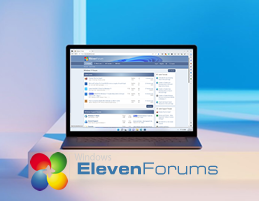- Local time
- 12:45 AM
- Posts
- 310
- Location
- Port Hastings, Nova Scotia, Canada
- OS
- Windows 11 Pro Version 24H2 (Build 26100.4652)
Steve Gibson has just released SpinRite Version 6.1, which works with SSDs and can improve their performance. The upgrade is free for SpinRite 6 customers. If you are a registered SpinRite Version 6 customer, you should receive an email with upgrade instructions. The upgrade was very fast. I then created a SpinRite Recovery CD with the new version.
GRC | Hard drive data recovery software
I last used it on an HDD many years ago. It recovered a significant of data and rendered the drive readable. My customer was very pleased, as was I.
Have a great day.
Regards,
Phil
GRC | Hard drive data recovery software
I last used it on an HDD many years ago. It recovered a significant of data and rendered the drive readable. My customer was very pleased, as was I.
Have a great day.
Regards,
Phil
- Windows Build/Version
- Windows 11 Pro, Build 22631-4169
My Computers
System One System Two
-
- OS
- Windows 11 Pro Version 24H2 (Build 26100.4652)
- Computer type
- PC/Desktop
- Manufacturer/Model
- Dell XPS8930 SE
- CPU
- Intel i7-9700K 4700 MHz
- Motherboard
- Dell XPS 8930
- Memory
- 32 GB (4 x 8GB SK Hynix DDR4 @1333 MHz) (2666 MHz)
- Graphics Card(s)
- NVIDIA GeForce RTX 2060 (6 GB) GDDR6 300 MHz
- Sound Card
- None
- Monitor(s) Displays
- Dell UltraSharp U2518D 25"
- Screen Resolution
- 2560 x 1440
- Hard Drives
- NVMe Intel 1024 TB
Seagate 2 TB, SATA-III
- PSU
- 850 W Gold Standard
- Case
- Dell XPS 8930 Base (Special Edition)
- Cooling
- Air
- Keyboard
- Dell 0G4D2W
- Mouse
- Dell MOCZUL
- Internet Speed
- Download 553 Mbps, Upload 686 Mbps
- Browser
- Google Chrome
- Antivirus
- ESET Smart Security Premium, plus Malwarebytes Premium
- Other Info
- BIOS Version 1.1.31
-
- Operating System
- Windows 11 Pro Version 23H2 (Build 26100.4652)
- Computer type
- Laptop
- Manufacturer/Model
- Dell XPS 15 7590
- CPU
- i7-9750H 4.5 GHz
- Motherboard
- Dell XPS 15 7590
- Memory
- 16 GB (2 x 8GB @ 1333 MHz) DDR4-2666 MHz
- Graphics card(s)
- NVIDIA GeForce 1650 4 GB GDDR5
- Sound Card
- None
- Monitor(s) Displays
- Dell XPS 15 7590, 15.6" InfinityEdge Anti-Glare, Non-Touch
- Screen Resolution
- 1920 x 1080
- Hard Drives
- 512 GB M.2 PCle NVMe SK Hynix
- PSU
- 130W Power Adapter
- Case
- Dell XPS 15 7590
- Cooling
- Air
- Keyboard
- Laptop
- Mouse
- Logitech M510
- Internet Speed
- Download: 400 Mbps, Upload: 203 Mbps
- Browser
- Google Chrome
- Antivirus
- ESET Smart Security Premium, plus Malwarebytes Premium
- Other Info
- BIOS Version 1.35.0















